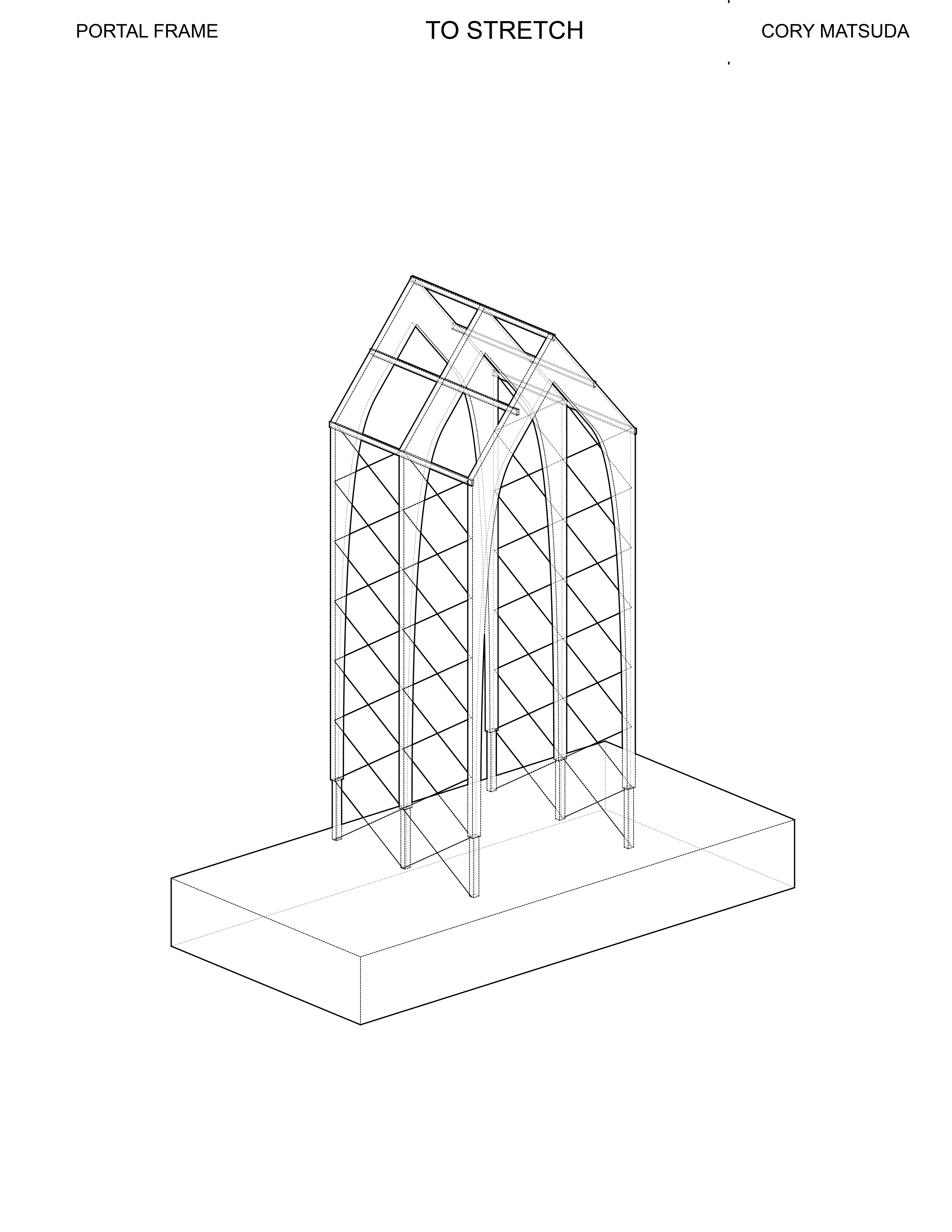This study of structure began with the analysis of three different portal frame structures as case studies: a generic frame for a small chapel in Gulag, Mies Van Der Rohe's Crown Hall, and Frank Lloyd Wright's Taliesin West. This served as a basis for five abstracted variations which explore the different possibilities through the inherent nature of this linear and repetitive framing system. From these five new forms emerged fifteen more variations which addressed given boundaries for three different sites: a valley which desires a bridge, a hillside which forces undulation to adapt, and a flat plane to serve as ground zero for a tower. In the end, one of these final fifteen variations was then realized into a small, scale physical model with its intentions to understand how the structure would reach within the physical world.
























